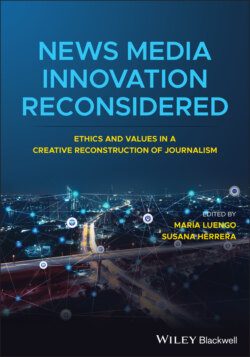Читать книгу News Media Innovation Reconsidered - Группа авторов - Страница 20
Social Media
ОглавлениеPlatforms such as Twitter are essentially microblogs, but unlike users’ comments and other UGC that are produced after the journalist has published the story, social media material is a potential journalistic source (Noguera Vivo, 2012). Journalists initially disdained the potential of social media in their job because instant information combined mass distribution with an easy publishing process and the absence of editorial supervision. “A toy for boring celebrities and high school girls” is how a columnist described Twitter in 2009 (Hermida, 2012, p. 168).
Social media challenged traditional journalistic values such as impartiality and accuracy. According to one study, a high percentage of tweets by journalists themselves contained at least some expression of opinion and used them to share information about their work and their personal lives (Suárez-Villegas and Cruz-Álvarez, 2016b). Therefore, prestigious news outlets such as The New York Times, the BBC, and The Washington Post, issued guidelines about the use of social media by their employees. New ethical concerns arose as misinformation and fake news became a problem. Newsrooms used with caution the available content in Twitter, Facebook, YouTube, or Instagram, and most journalists adopted social media more quickly and with fewer complaints than the previous innovations (Suárez-Villegas and Cruz-Álvarez, 2016b).
Citizens and social media users were excluded from meaningful participation in the media ethics discourse. However, as Ward and Wasserman (2010) argued, new technologies and platforms were democratizing media globally and were rendering journalistic practices more flexible and fluid, facilitating an “open media ethics.”
